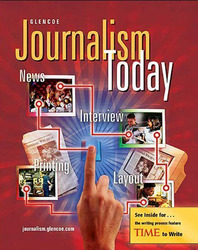
Journalism TodayChapter 14: Producing the YearbookOverviewThe yearbook is an important record of what has happened during a school year, but it will become even more important as time passes and people want to remember their school years. Therefore, you should seek to include as many students as possible in the yearbook. Besides providing a historical record, a yearbook also functions as a picture book and a public relations tool and offers an educational experience for those who work on it. The first step in planning a yearbook is to make sure there's enough money to finance it. Although schools may provide some funds, staffs often have to raise additional money by fund-raising and selling advertising space. When selling the yearbook itself, you can give discounts to students who pay early in the year, thereby bringing in needed cash at that point. Planning the content of the yearbook begins with planning the sections—usually student life, academics, clubs and organizations, sports, and people. Once you decide the total number of pages in the book (based on a number of 8- or 16-page signatures), you can determine how many pages to allot to each section. Then you can use a ladder diagram to figure out what will appear on each spread. You can also begin to develop theme ideas, discussing and testing them until you come up with one that will work for the whole book. Good yearbook copy should be insightful and interesting. It needs the same kind of good leads and good writing as newspaper copy. Headlines and captions are particularly important because sometimes these are all students read. High-quality, high-interest photos are a must for any yearbook. Include as many people and as many action shots as possible. Good photographic coverage should be considered in the initial planning of the book. Page design begins with a consideration of content. Photo placement should begin with the dominant photo. An eyeline should be created; and five to seven photos—as well as captions, a headline, and other copy—should appear on each spread. Once work begins on the book, designate a staff member to serve as the coordinator for each section. These section editors—together with the production editor, photography editor, and business manager—must work together and with the staff adviser and yearbook editor to ensure consistency and quality within each section. Staff members should also get to know the representative from their yearbook company and follow the procedures and deadlines the company sets up. |  |















